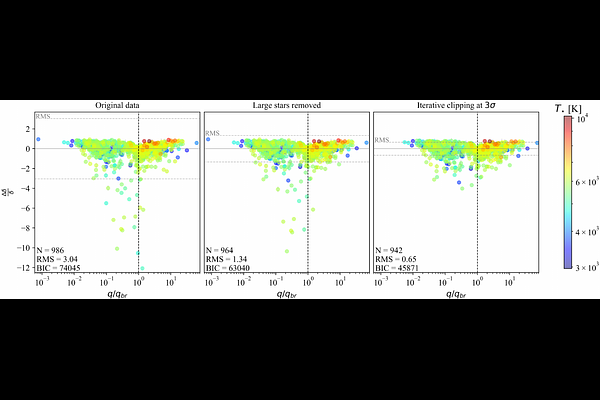A planet-host ratio relation to synthesize microlensing and transiting exoplanet demography from Roman

A planet-host ratio relation to synthesize microlensing and transiting exoplanet demography from Roman
Kathryn Edmondson, Eamonn Kerins
AbstractThe NASA Nancy Grace Roman Space Telescope (Roman) will be the first survey able to detect large numbers of both cold and hot exoplanets across Galactic distances: ~1,400 cold exoplanets via microlensing and ~200,000 hot, transiting planets. Differing sensitivities to planet bulk properties between the microlensing and transit methods require relations like a planet mass-radius relation (MRR) to mediate. We propose using instead a planet-host ratio relation (PHRR) to couple directly microlensing and transit observables. Unlike the MRR, a PHRR uses parameters that are always measured and so can leverage the full Roman exoplanet sample. Using 908 confirmed exoplanets from the NASA Exoplanet Archive, we show that transit depth, $\delta$, and planet-host mass ratio, $q$, obey a PHRR that is continuous over all planet scales. The PHRR is improved by including orbital period, $P$, and host effective temperature, $T_{\star}$. We compare several candidate PHRRs of the form $\delta (q,T_\star, P)$, with the Bayesian Information Criterion favouring power-law dependence on $T_\star$ and $P$, and broken power-law dependence on $q$. The break in $q$ itself depends on $T_\star$, as do the power-law slopes in $q$ either side of the break. The favoured PHRR achieves a fairly uniform $50\%$ relative precision in $\delta$ for all $q$. Approximately $5\%$ of the sample has a transit depth that is strongly under-predicted by the PHRR; around half of these are associated with large stars ($R_\star > 2.5 \, R_{\odot}$) potentially subject to Malmquist bias.